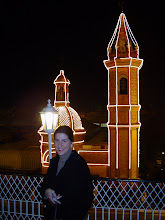
We're now turning our attention to the film Blade Runner, a loose adaptation of PKD's Do Androids Dream of Electric Sheep?. I want us to contemplate what the film does, that the novel does not and vice versa.
The film scholar Dudley Andrew suggests that where literature elaborates a world out of a story, cinema carves a story out of a world. This distinction is fascinating to consider (and the kind of conundrum that PKD might have appreciated). How doe novels and films tell different kinds of stories? Lets consider for a moment the artistic, ideological, and economic issues that arise when works are adapted. Which novels are you familiar with that have been adapted into film? What choices did the director make? Why do you think these choices were made? What were the results?
According to Andrew, there are three primary methods of film adaptation: borrowing, intersecting, and transforming. If we apply these terms to science fiction film, Star Wars can be viewed as a film that "borrows" its basic narrative from the legend of King Arthur, relying on the mythic power of an original source. A sci-film like Solaris "intersects" with an original text, that is "the uniqueness of the original text is preserved to such an extent that it is intentionally left unassimilated in adaptation." The adaptation of H.G. Wells' The Time Machine on the other hand, "transforms" an original source into the medium of film, attempting to remain faithful to the literary experience.
Why is Blade Runner considered such an important sci-fi film? Perhaps its biggest achievement is the creation of a future Los Angeles (versus San Francisco in novel) the that is imaginative and at the same time believable. One scholar, Brooks Landon, suggests thinking about the film as an adaptation that "frames" its antecedent, serving as "a lens for better understanding its source and as a mirror for better studying ourselves." Consider the city of the future. What would your visual design look like?
Viewing Strategies
Consider the literary, dramatic, and cinematic aspects of film.
Literary elements include characterization, theme, and symbolism.
Dramatic elements include mise-en
scene (costume, props, acting)
Cinematic elements include camera angle/movement, light, color, sound, editing, special effects
Playing Detective with Film Allusions
Each of you will receive a textual or pictorial "clue" to the film's meaning. You will conduct research on your clue. What is it? You must complete independent online research. As detectives, you must then write a short report on your clue, prior to viewing the film. After viewing the film you will amend your report providing observations and possible connections to the film. You will then present your findings to the class and lead a discussion on your clue. Scenes can be replayed at this time. Please post your report on your blog and include images or text when appropriate.


No comments:
Post a Comment